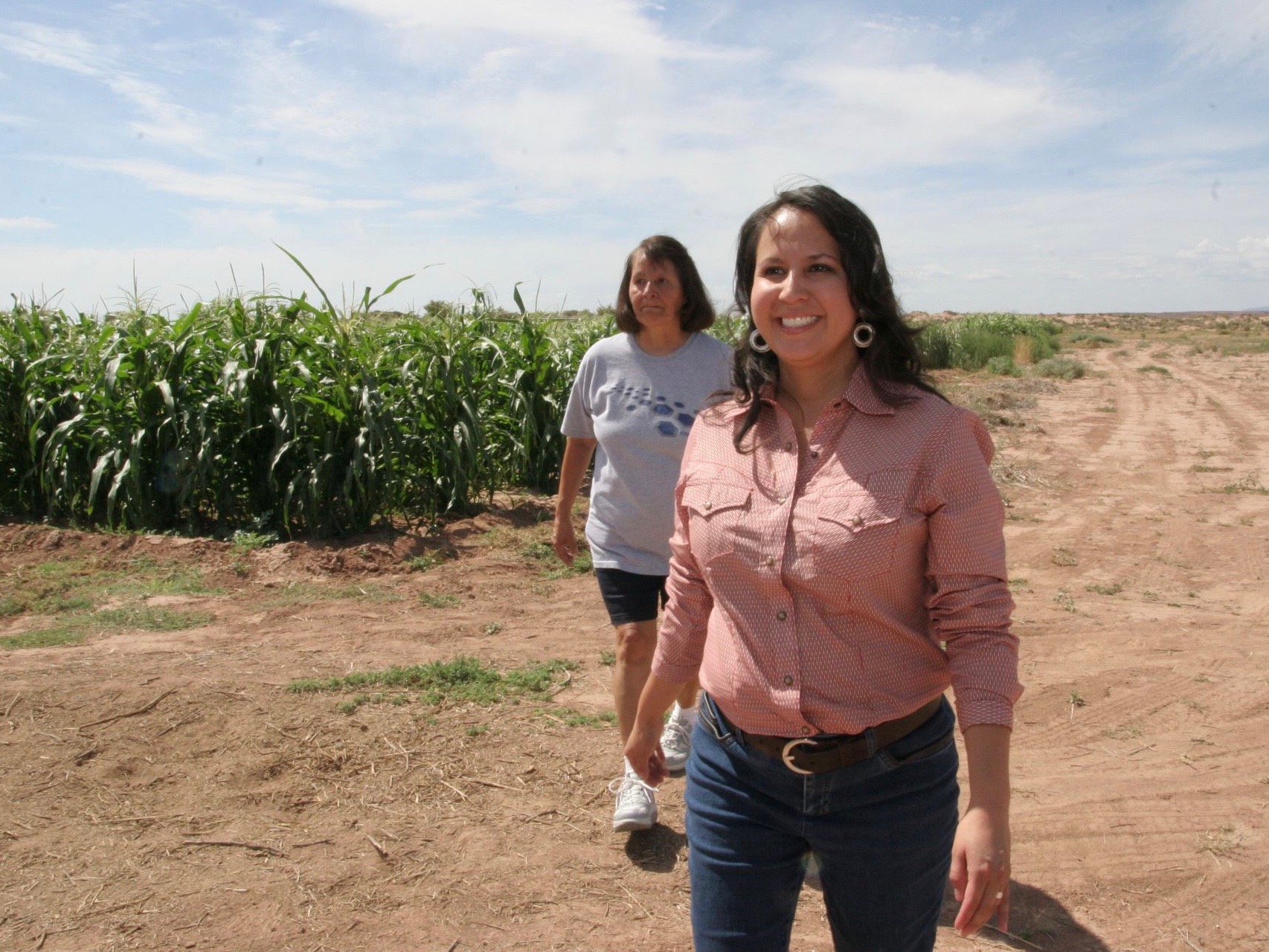
North Carolina Senate candidate Laurel Deegan-Fricke is running in the capital city of Raleigh. Campaign photo from Facebook
#NativeVote16 – Raising enough money to win seats in state legislatures
By Mark Trahant
Trahant Reports
TrahantReports.Com There was a hundred dollars-a-plate fundraiser Wednesday night for Laurel Deegan-Fricke. She’s a member of the Mandan Hidatsa and Arikara Nation and running in a highly competitive seat in Raleigh, North Carolina. Two years ago that race was decided by less than a thousand votes out of some 82,000 cast. If you missed the fundraiser. Don’t worry. It won’t be Deegan-Fricke’s last. The “cost” of a Senate seat in North Carolina averages $173,576, according to The National Institute on Money in State Politics. So if you’re not doing the math that means some 1,735 dinners. Then again Raleigh is not average. Four years ago, according to Open Secrets, candidates spent nearly $600,000 trying to win that Senate seat. Two years ago the winning candidate spent $470,000 and the losing candidate a whopping $1.1 million. How much time do you have to spend raising money? “All day and night with less than 100 days to election,” answers Deegan-Fricke. She says she needs $500,000 to stay competitive. This seat in Raleigh, North Carolina, is the most expensive district on my spreadsheet of Native American candidates for legislatures. Yet the issue of money is one reason why there are not more Native Americans serving in Congress, state legislatures and as governors. Of course the problem is that any “outside” candidate has an uphill climb in this aspect of representation. The fact is the system greatly favors those who are already in office. And money is one way to scare away potential challengers. In 2014 nearly a third of all Americans lived in states with an uncontested state senate race and more than forty percent in states with uncontested house races. (Previous: Hidden history of why Native Americans lose elections and what to do about it.) There are solutions. One alternative is a system that includes full or partial public financing for campaigns. In an ideal setting, once a candidate meets the requirements to run, such as gathering signatures, and raising a limited amount, then state dollars are made available. A second system that’s used in many countries is that the political party funds its candidates. (In the U.S. it’s the opposite: You’re told by the party that you will have to raise “X” dollars before you will get funding. And usually the “X” is a big number.)

Wenona Benally, candidate for Arizona House of Representatives in District 7. Campaign photo from Facebook
Arizona and Minnesota both have public financing options. According to the National Conference of State Legislators, “a candidate for state office in Arizona must raise $5 contributions from at least 200 people in order to qualify for the program. In return, the state provides the candidate with public money in an amount equal to the expenditure limit.” States cannot require candidates to participate in public financing and that limits the program’s effectiveness because some candidates can raise unlimited amounts. I should also mention that some of the most interesting experiments right now are occurring at the local level, such as Seattle’s new approach where voters are given vouchers to send to candidates. Wenona Benally, Navajo, who’s running for the Arizona House in District 7, said, “qualifying as a ‘clean elections’ candidate and receiving public funds helps tremendously with paying for campaign activities. However, the process for qualifying as a CCEC candidate is very time-consuming & arduous.” She said the Secretary of State reviews every donor and if it cannot verify all of the data, then the form gets kicked out.

Minnesota State Rep. Peggy Flanagan, a member of the White Earth Nation, speaks at the Democratic National Convention in Philadelphia, Pennsylvania, on July 28, 2016. Photo by Indianz.Com
Minnesota candidates for the Senate must raise $3,000 and House candidates $1,500 in order to receive public funds for their campaign. Rep. Peggy Flanagan, White Earth Ojibwe, representing St. Louis Park and District 46, said she will receive $7,451 from public campaign financing. “I raised $50,000 for my race last year and I am trying to do the same this year,” she said. “I want to run a robust field campaign, but also want to make sure I can give money back to the party to take back the House.” Successful fundraising is essential in any campaign. As Rep. Flanagan said: “I also think it’s important that candidates of color and Indigenous candidates are good fundraisers to demonstrate our power to folks in our caucus and in the state overall.” Indeed that might be the most important point to remember. Yes, the challenges of fundraising are real, and a barrier to office for too many potential candidates. But if you look at the overall levels of representation, then state legislatures are where Native American candidates have been the most successful. So candidates are already raising what they need. That matters because it lays the groundwork for when more of those candidates choose to run for Congress. And “when” is the right word. Mark Trahant is the Charles R. Johnson Endowed Professor of Journalism at the University of North Dakota. He is an independent journalist and a member of the Shoshone-Bannock Tribes. To read more of his regular #NativeVote16 updates, follow trahantreports.com On Facebook: TrahantReports On Twitter: @TrahantReports
Join the Conversation
